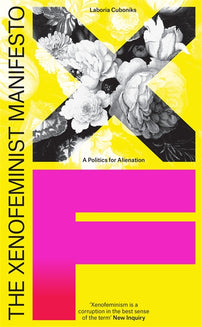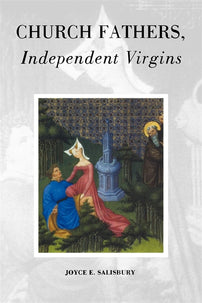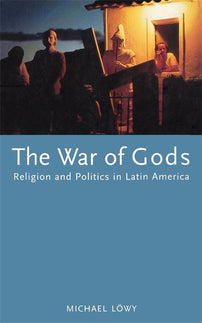Spirituality as a Force of Rebellion: The Movement for Legal Abortion in Argentina
Today in Argentina we see a battle for political spirituality in the streets, in houses, in beds, and in schools.

First published in Emergentes, June 13. Translated by Liz Mason-Deese and Ana Vivaldi.
Feminism speaks of bodies at the same time that it raises a dispute about political spirituality. That is political precisely because it does not separate the body from the spirit, nor flesh from fantasies, nor skin from ideas. There is a mystical dimension to feminism (as a multifaceted movement). It works from affects and passions. It opens that thorny field of desire, of relationships of love, of erotic swarms, of ritual and celebration, of longings beyond their allowed borders. Feminism, unlike other politics that are considered leftist, does not deprive bodies of their indeterminacy, of their not-knowing, of their embodied dreaming, of their dark power (potencia). And therefore it works on the pliable, fragile, and, at the same time, mobilizing plane of spirituality.
Feminism does not believe there is an opium of the people: it believes, to the contrary, that spirituality is a force of rebellion. That the gesture of rebelling is unexplainable and, at the same time, the only rationality that liberates us. And that it liberates us without turning us into pure, heroic, or even good subjects.
The Church has understood this from all times. We can refer once again to the already classic Caliban and the Witch, by Silvia Federici, to remember why the burning of witches, heretics, and healers was a favored scene for discrediting feminine knowledge about bodies and terrorizing its healing effervescence, and its strength as a technology of friendship between women. Or the even more classic Witches, Midwives, and Nurses: A History of Women Healers by Barbara Ehrenreich and Deidre English, where, for example, they analyze the 15th century witch-burning guide that assured “nothing does more harm to the Catholic Church than midwives” (The Malleus Malificarum), who of course are also the abortionists.
Today we see a battle for political spirituality in the streets, in houses, in beds, and in schools (that, in its massive movement, dyes everything green, as a principle of hope). And therefore, again, the Catholic Church, through its male representatives and spokespeople feels that it has a mission to complete, a task of the salvation of souls that is translated into a war for monopoly of tutelage over feminine bodies.
The words that the “villero” priest Padre Pepe expressed in Congress condensed all the condiments to map the battle. 1 He made his intervention the same day that the young Karen Torres, from the shanty town 21-24 and Zavaleta (where Pepe worked for years), spoke. This was a symptomatic coincidence since the leader from the shanty town said exactly that which would refute the Church’s arguments. And she said it in the voice of many women for whom the Church claims to speak. Karen argued: “In our neighborhoods, institutions such as the churches intervene that are responsible for moralizing our bodies, our decisions, and that operate so that we women do not have access to legal abortion. Without rights to our bodies and our lives we are condemned to continue being violated.”
The intervention of the “villero” priest shows two ways of disregarding what these young women who live in the shanty towns are saying. On one hand, on saying that “the IMF is abortion” (the title with which his speech circulated in the media), the Church intends to establish that women’s self-determination, the right to decide over our bodies, is a neoliberal issue. They ignore and falsify both the historical struggles for abortion and the current state of the feminist movement in which this demand is associated with a demand for a dignified life and against neoliberal adjustments, and in whose amalgam, pañuelazos were carried out in many neighborhoods and shanty towns. 2
In their pretension to be seen as the only anti-liberals, in their argument, the Church spokesmen especially refer to “poor women”: those whom they consider to especially need their protection, from whom they take away their ability to make decisions in the name of their social condition, whom they make visible as resistant if they are mothers. Thus in the line of the Vatican that also raises up leaders like Juan Grabois (MTE), the trap that they lay says that it is “classist”: they attempt to draw a class distinction that would justify that poor women have no other choice than being poor and Catholic because maternity is their only option. In this way, they attempt to reduce abortion (that is, deciding about desire, maternity, and one’s own life) to an eccentric gesture of the middle and upper classes (who clearly have different economic resources). The “classist” argument, that of course exists in terms of differentiated possibilities for accessing a safe abortion, is reversed: it becomes a justification for clandestinity. The right to decide, for the Church, must thus be kept away from popular neighborhoods. This crusade to infantilize “poor” women is the spearhead, because if it is disarmed, the Church itself will be left without any “faithful.” What is most brutal is how, to sustain this, they have to turn a deaf ear to — ignore and deny — what the women of the shanty towns themselves and the organizations who work with them are saying. Even when they are insisting everywhere with the slogan “stop speaking for us.”
There is one more twist to this argument for paternalistic tutelage: Father Pepe evokes the detained-disappeared women in the ESMA [the Higher School of Mechanics of the Navy, used as a detention center during the military dictatorship] to say that they, even in that extreme situation, chose to give birth. With that image, not only is he avoiding mention of the appropriation of their children which were considered the “spoils of war,” but he is also falsely remembering these imprisoned and tortured women only as self-sacrificing women. This slip to the 70s is not a coincidence: precisely when today, also thanks to the feminist movement, the cruelty of sexual torture against the bodies of the detained-disappeared women is being re-examined in relation to how the genociders wanted to “discipline them” for being militants, for not staying at home, for experimenting with other types of family and affective bonds. It is no coincidence that the scene returns to the 70s at the same time when the former daughters disaffiliated from their genocidal parents are marking a continuity between the concentration camp and the scene of domestic violence.
But what else does this analogy between the ESMA and the shanty town say? That the shanty towns are today’s concentration camps? That women in each place have no option other than giving themselves over to motherhood at expense of their own lives? It is clear that the church, through its male representatives, does not want to surrender its legal control over women’s bodies, and that it recognizes the feminist movement as a direct threat to its power, built over the control of feminized bodies and spiritualities. Because it is the control over life and over modes of life (and a whole war is being forged over the word “life”) that is at stake and whose purpose is to make spirituality into a synonym for obedience and new forms of stewardship. Of course the Church has its allies in the Congress: the Peronist party’s document that associated abortion with a “culture of disposal” shares the frame linking feminism and liberalism. But it is an anti-neoliberal feminism that has been gaining strength in the last few years, one that makes a direct challenge to this flawed argument of the Church. The geometry of power, however is unfolding on the streets.
Postscript: We Took the Night
(originally published in Lobo suelto, June 15)
The government attempted to create an absurd stage, to divide the plaza in front of Congress as if there were two “symmetrical” forces: one pro-life, the other pro-abortion (and they named them this way). As if the division of Congressional votes, which were being fought over in the parliamentary lobby in the weeks prior to the debate, was a reflection of what was going on on the streets. There were two reasons for this. First, to deny the massiveness obtained by the argument for legalizing abortion, transversing age, generation, organizations, neighbourhoods, families and languages. In this sense, the green wave showed a type of pressure from below that the representative system could not become immune from. The democracy practiced on the streets has the strength of what is real and this is the true asymmetry.
The government’s second objective was to attempt to devalue an accumulated history of struggles by designing a new and artificial “rift” built with metal gates. The power of the photograph of a completely full and green plaza on June 4 was the prelude of this current of opinion, sensitivity, and capacity for street mobilization that took over the city once again. 3 They attempted to stop that image from being repeated. And the movement took the shape of a silver and green serpentine that took over avenues, making the night shine and tremble with fires here and there, glitter lighting up faces, and blankets covering the asphalt.
This massive overflow dismantled the pathetic choreography of the government. There were thousands and thousands of us coming and going. We were determined to stay and that was not a problem. To take over the night was to un-know the temporality of the clock. The state of vigil was a mix of the state of alert that the feminist movement has been asserting in response to the threads of violence against women’s bodies and the joy of being together that gathers us together in a collective body and warm us up.
There is no going back. In that mode of producing care by taking over the street. There is no going back. In the glowing looks of youth who know that occupying the streets is the real way of doing politics and where all bodies matter. There is no going back. Because we opened a crack in the future which they want to rob us of through foreign debt and multiple forms of private debt, as if they were a gag over our everyday lives. There is no going back because we made a hole in what is normalizing. Because in these massive parties with which we are making histories, we are creating new forms of collective existence. We have a “we.” We have each other. And our truth is that we are not alone.
Translators' Notes
1. “Villero” refers to a person living in the shanty towns; in this case, a “villero” priest is one who works in the shanty town and is usually associated with Liberation Theology.
2. Pañuelazos were rallies in preparation to the vigil during the congress debate last June 13th. During the pañuelazos supporters of the legalization of abortion wore the green scarves which have been used to identify the movement, and which echo the white headscarves of the Mothers of Plaza de Mayo.
3. The massive march for the third anniversary of the Ni Una Menos Movement, which has been a leading force in the struggle to legalize abortion, highlighting how the criminalization of abortion is another major factor leading to the deaths of many, mostly poor, women.
[book-strip index="1" style="display"]





